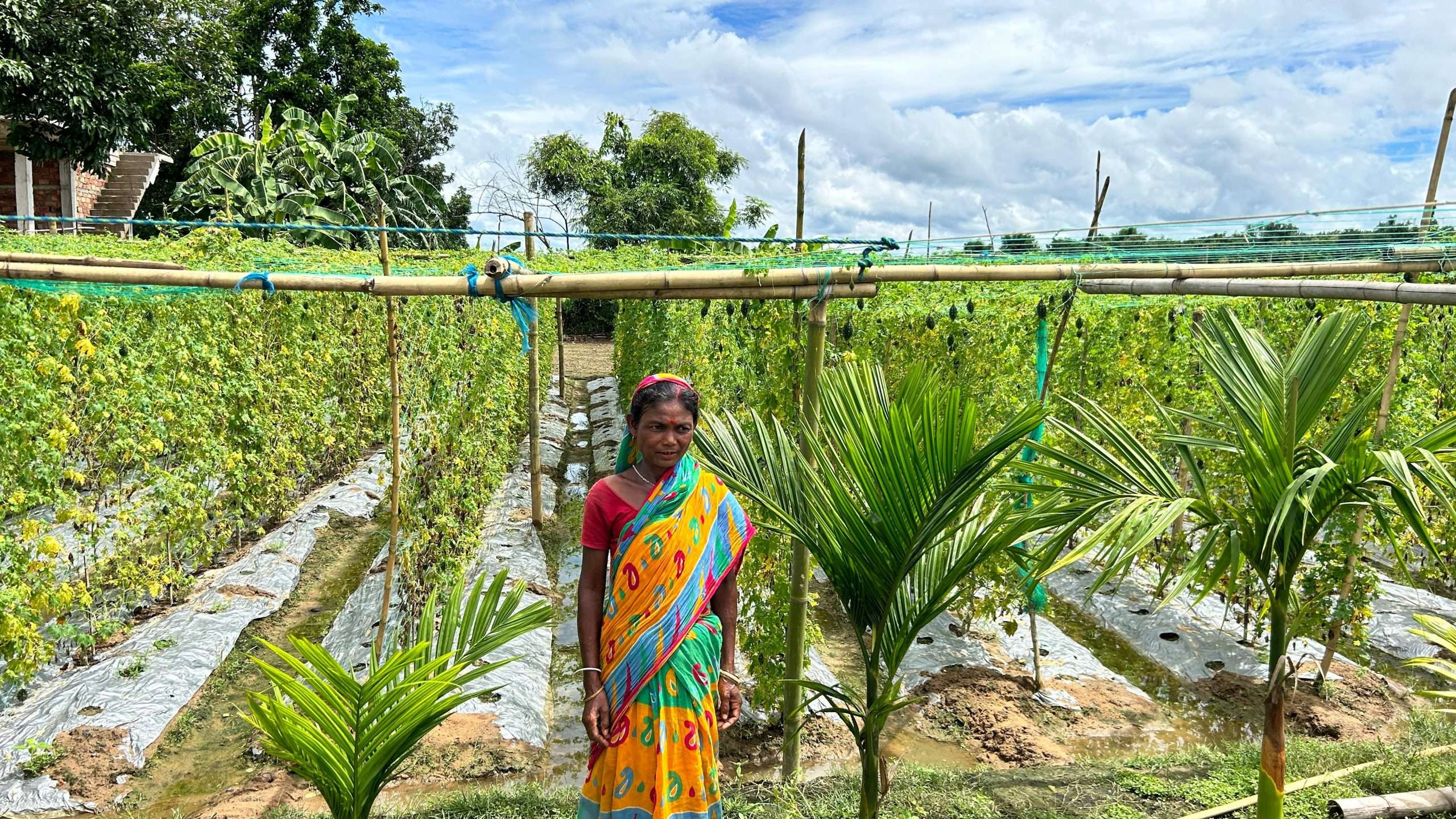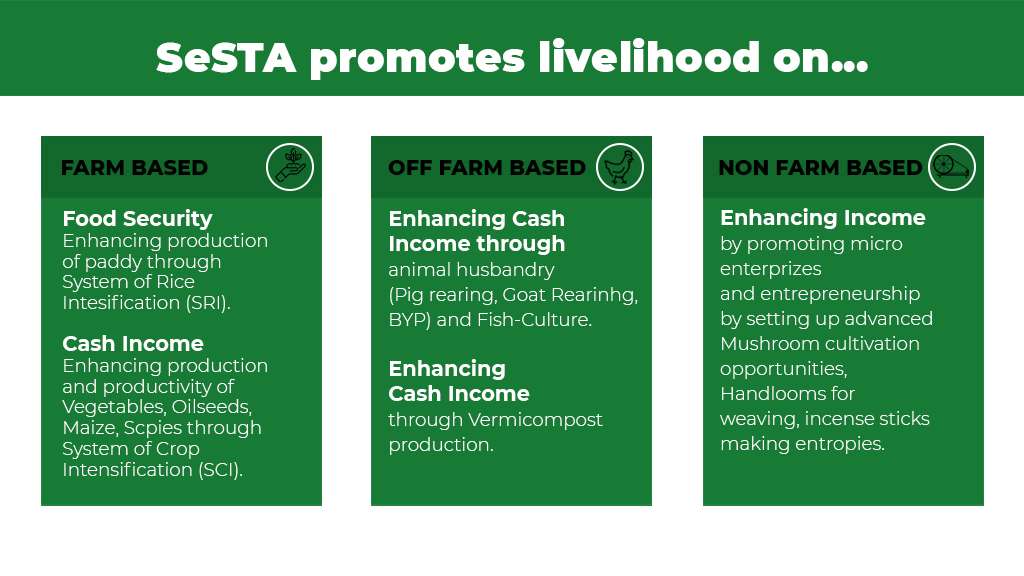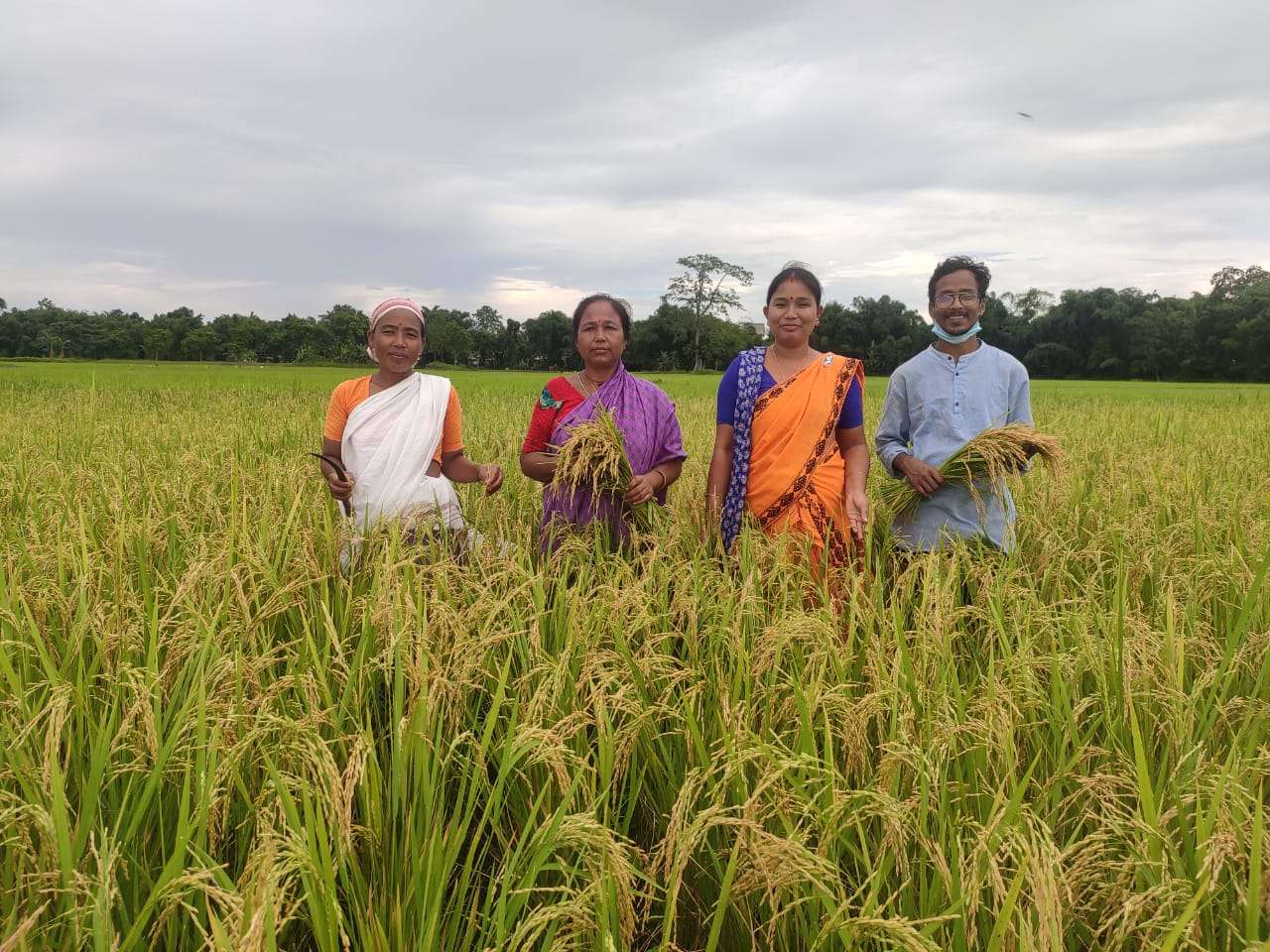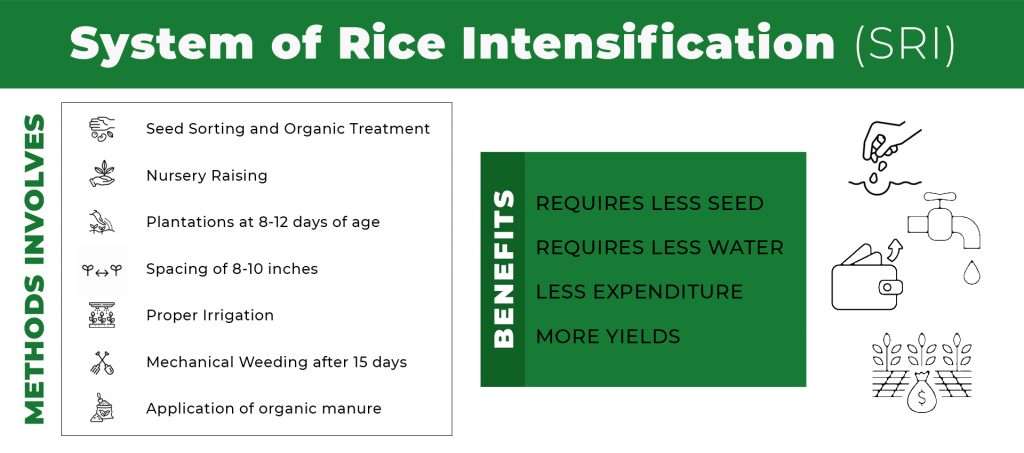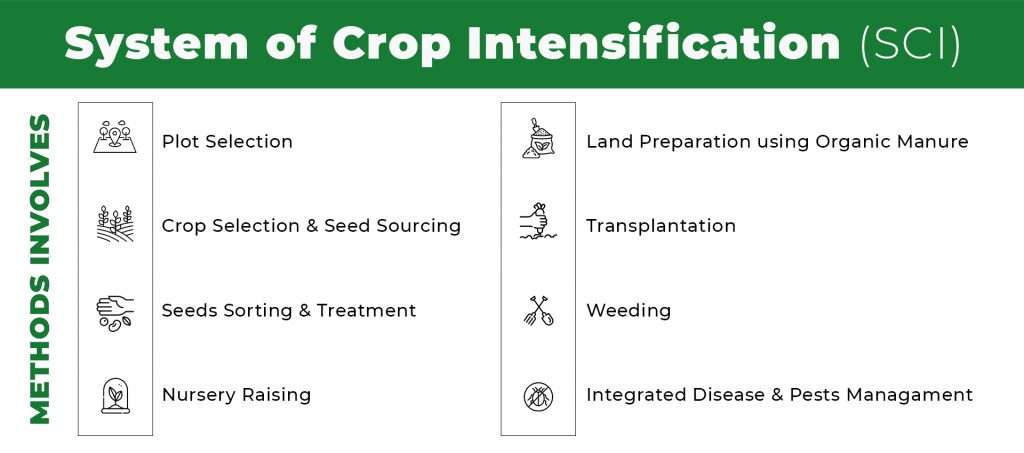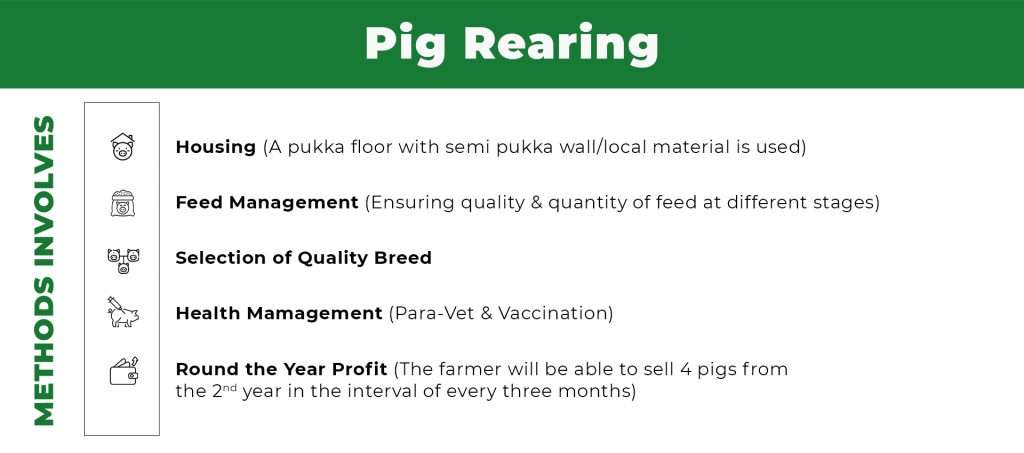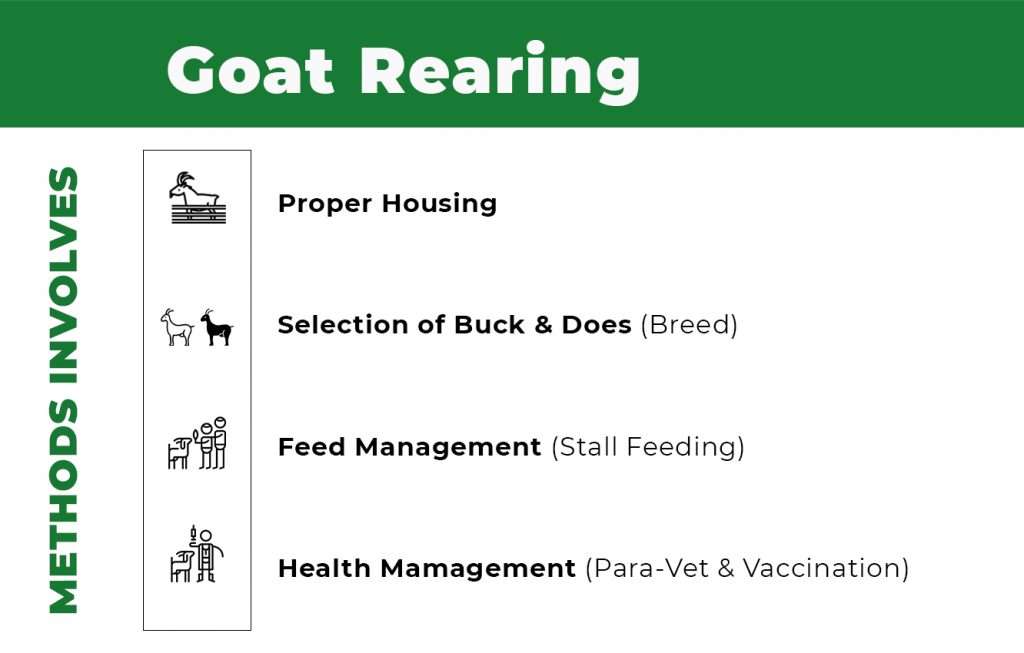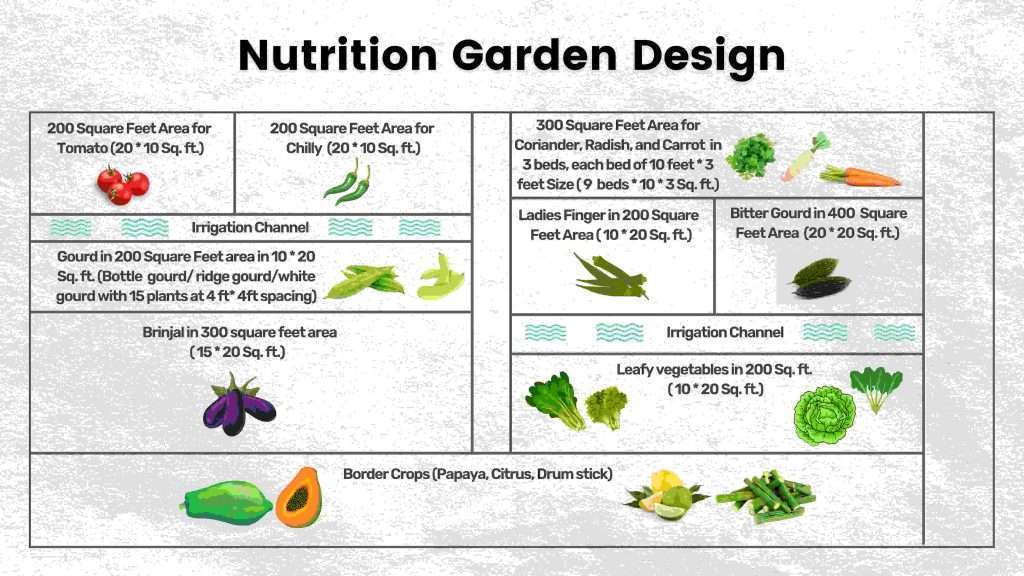Focussed Individual Household level livelihood planning based on resource availability and future visioning.
The 1 Bigha or less model – Focus on three aspect
Enhance food security by increasing productivity in Paddy from 1.5 to 2 times.
Apply SCI (System of Crop Intensification) principles in pulses (using residual moisture after Kharif) and vegetables (year round) for cash income.
Enhance income through animal husbandry ( pig/ goat/ backyard poultry)
Apply SCI (System of Crop Intensification) principles in pulses (using residual moisture after Kharif) and vegetables (year round) for cash income.
Enhance income through animal husbandry ( pig/ goat/ backyard poultry)
